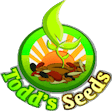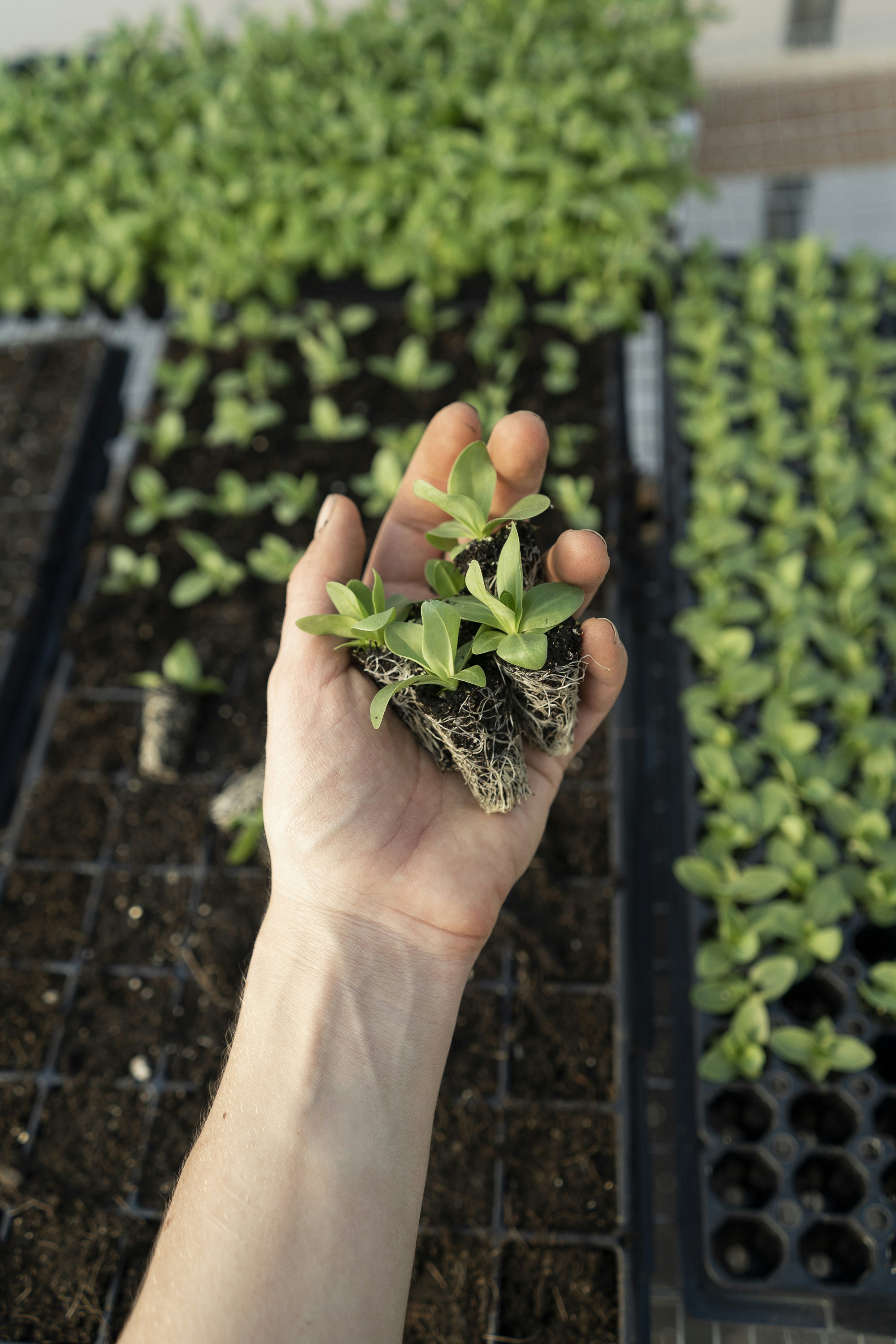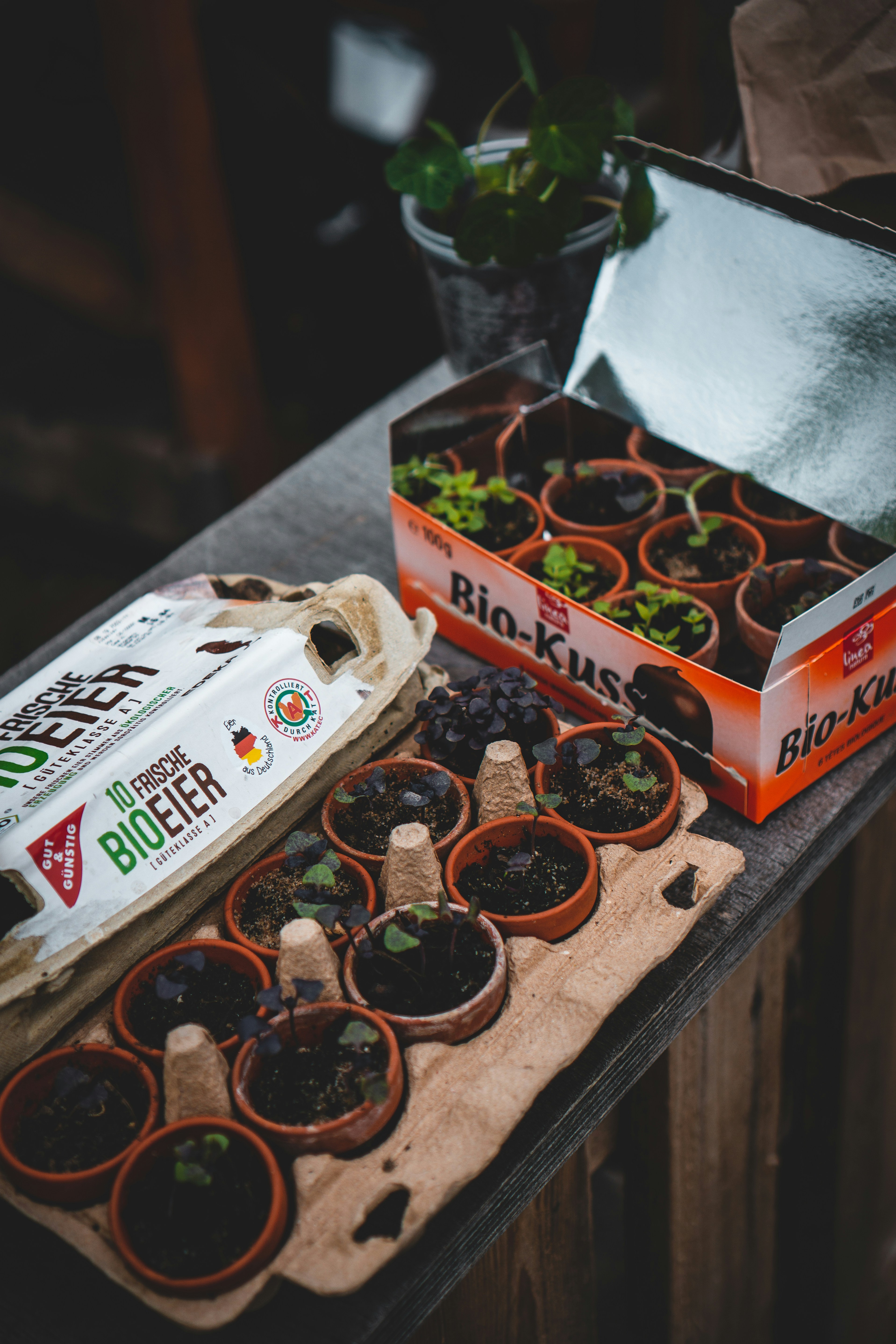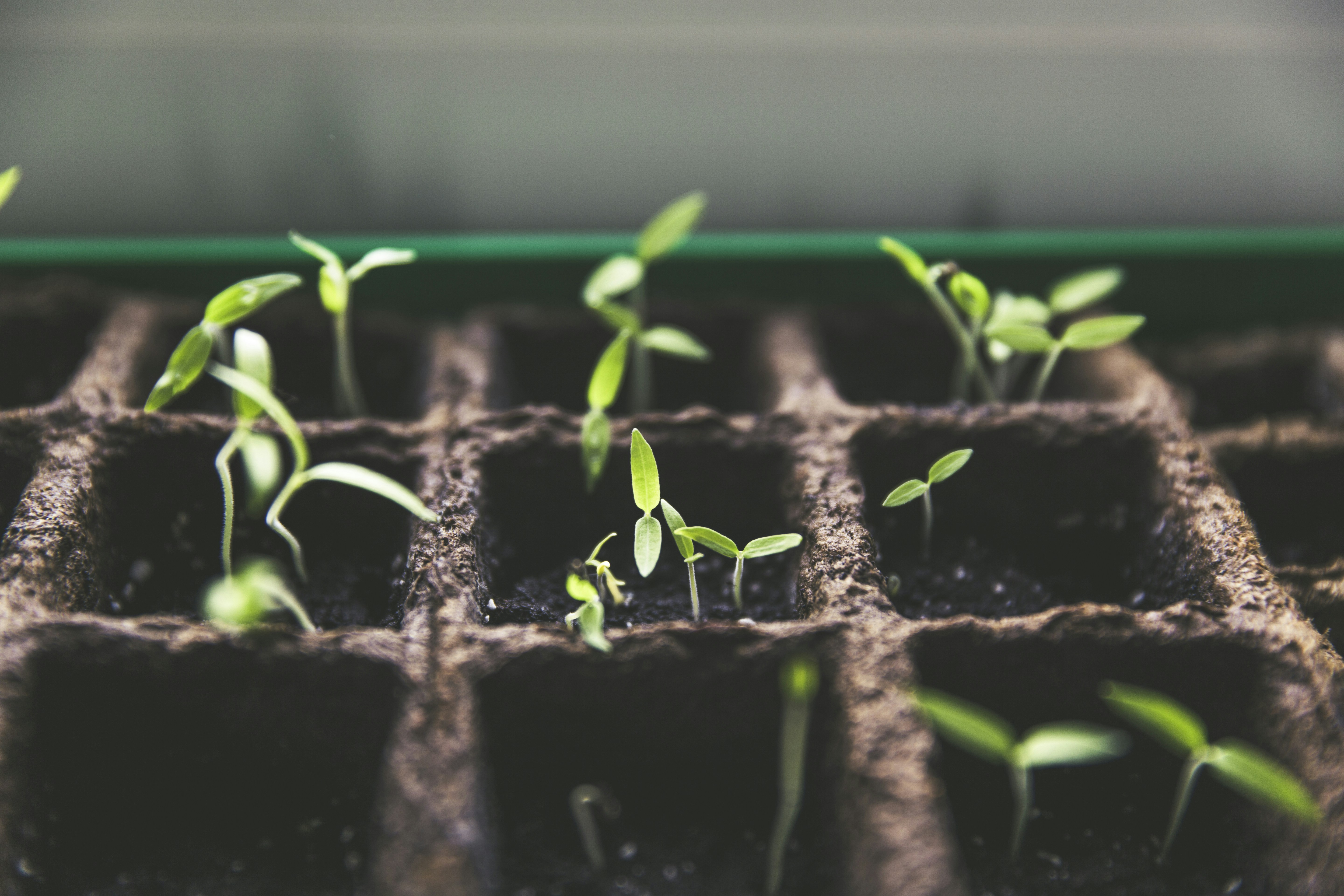So you’ve decided to try your hand at gardening and are eager to plant some seeds. But when is the best time to do so? Well, it all depends on the type of seeds you’re working with. Each plant has its own preferred planting time, whether it’s a delicate flower or a hardy vegetable. By understanding the optimal planting seasons for different seeds, you can give your plants the best chance of thriving in your garden. So let’s dive into the world of planting and discover the perfect timing for your seeds!
Factors influencing the best time to plant seeds
Planting seeds at the right time can make a significant difference in the success of your garden. Several factors influence the best time to plant seeds, including the season, climate, type of seed, and growing zone. These factors determine the optimal conditions for seeds to germinate and thrive, ensuring a healthy and fruitful garden.
Season
The season plays a vital role in determining the best time to plant seeds. Different seasons offer varying temperatures, sunlight levels, and weather conditions, all of which influence seed germination and growth. Spring, fall, summer, and winter each have unique characteristics that affect plant development. Understanding these seasonal variations is crucial for successful gardening.
Climate
The climate of your region is another significant factor to consider when deciding the best time to plant seeds. The temperature, rainfall, and overall weather patterns in your area affect plant growth. Some plants thrive in cooler climates, while others prefer warmer temperatures. Assessing the climate conditions in your region will help you determine the most favorable time to plant seeds.
Type of seed
Different seeds have different requirements for optimal growth. Some seeds, like tomatoes and peppers, require a longer growing season and warmer temperatures to thrive. Others, such as lettuce and spinach, prefer cooler temperatures for germination and growth. Understanding the specific needs of the seeds you want to plant will help you determine the best time to sow them.
Growing zone
Every region has a designated growing zone that provides important information about the climate and environmental conditions of the area. The United States Department of Agriculture (USDA) has developed a plant hardiness zone map that divides the country into various zones. Knowing your growing zone enables you to choose seeds that are best suited for your area and determine the optimal planting time based on the specific zone’s climate.
Planting seeds indoors
Planting seeds indoors allows you to extend your growing season, especially in regions with shorter summers or colder climates. It provides a controlled environment where you can start seeds early to give them a head start before transplanting them outdoors. Indoor planting has several advantages and requires specific materials and steps for successful germination and growth.
Advantages of indoor planting
One of the primary advantages of indoor planting is the ability to start seeds earlier than the outdoor planting season. This is particularly beneficial for plants that require a longer growing season or for gardeners who want to get a jump start on the season. Indoor planting also provides protection from unpredictable weather conditions, pests, and diseases, giving seeds a better chance of survival.
Materials required for indoor planting
To start seeds indoors, you will need a few essential materials. These include seed starting trays or pots, a good quality seed starting mix, seeds of your choice, a spray bottle for watering, and adequate light sources such as grow lights or a sunny windowsill. It is important to ensure that your containers have drainage holes to prevent waterlogging and promote healthy root growth.
Steps for indoor planting
Indoor planting follows a set of steps to maximize the chances of successful germination and growth. Firstly, fill the seed trays or pots with a seed starting mix, leveling it gently. Moisten the soil with water using a spray bottle until it is evenly damp, but not saturated. Next, plant the seeds according to the instructions on the seed packet, covering them with a thin layer of the seed starting mix. Place the trays or pots in a warm location with adequate light, and keep the soil consistently moist. Once the seedlings have grown a few inches tall and the outdoor conditions are favorable, they can be acclimated to the outdoor environment and transplanted into the garden.
Planting seeds outdoors
While indoor planting offers numerous benefits, there is still something delightful about planting seeds directly in the soil and watching them grow in their natural environment. Outdoor planting provides a direct connection to nature and allows plants to adapt to their surroundings from the beginning. Understanding the advantages of outdoor planting, preparing the soil, and employing the correct planting techniques are crucial for successful outdoor seed sowing.
Advantages of outdoor planting
Planting seeds directly outdoors has its advantages, particularly for hardy and fast-growing plants. It eliminates the need for transplanting and allows plants to establish their roots directly in the soil. Outdoor planting also allows seeds to utilize natural sunlight and weather conditions from the start, which can result in sturdier plants with better resilience to environmental fluctuations.
Preparation of soil
Before planting seeds outdoors, it is important to prepare the soil properly. Start by removing any weeds or debris from the area where you plan to sow the seeds. Loosen the top layer of soil using a garden fork or a tiller to improve aeration and water drainage. Adding compost or organic matter can enhance the soil structure and provide essential nutrients. Ensure that the soil is free of clumps and is raked to a fine texture, creating a smooth seedbed for optimal seed-to-soil contact.
Planting technique
The planting technique for outdoor sowing largely depends on the type of seed you are planting. Some seeds, like larger ones such as beans or corn, can be directly sown into the soil by creating a hole at the appropriate depth and spacing. Smaller seeds, on the other hand, may require a shallow furrow or broadcasting the seeds over the prepared seedbed. Once the seeds are in place, cover them with soil, gently firming it to ensure good seed-to-soil contact. Water the area thoroughly but gently to avoid disturbing the seeds.
Spring planting
Spring is often considered the most popular season for planting seeds, as the weather starts to warm up and plants awaken from their winter dormancy. The benefits of spring planting, the best seeds for this season, and some tips for successful germination and growth are essential knowledge for a thriving spring garden.
Benefits of spring planting
Spring planting offers numerous advantages for gardeners. The warmer temperatures and longer days allow for faster seed germination and plant growth. The soil is also typically moist from spring rains, providing optimal conditions for seed emergence. Additionally, spring planting allows for a longer growing season, enabling plants to reach maturity before the winter frost arrives.
Best seeds for spring planting
Certain seeds are well-suited for spring planting, thriving in the optimal conditions provided by the season. Vegetables such as tomatoes, peppers, cucumbers, and beans are popular choices for spring planting. Flowers like marigolds, zinnias, sunflowers, and petunias also flourish when planted in spring. It is advisable to check the seed packet or consult local gardening resources for specific recommendations on the best seeds for your region.
Tips for successful spring planting
To ensure successful spring planting, there are several tips to keep in mind. Firstly, it is important to prepare the soil adequately by removing any debris and adding compost or organic matter. Timing is critical, so sow your seeds after the last expected frost date for your area. Follow the instructions on the seed packet regarding planting depth and spacing. Water the seeds gently but consistently, and provide them with adequate sunlight or artificial light if starting them indoors. Regularly monitor the seedlings for signs of pests or diseases and take appropriate measures to protect them.
Fall planting
Fall is an excellent time for planting seeds, as the moderate temperatures and cooler weather create favorable conditions for seed germination and growth. Understanding the benefits of fall planting, the best seeds for this season, and some tips for successful gardening can result in a bountiful fall harvest and even an early start for the following year.
Benefits of fall planting
Fall planting offers unique advantages for gardeners. The cooler temperatures reduce stress on young plants, resulting in stronger and healthier growth. The soil is still warm from the summer heat, promoting root development and providing nutrients. Additionally, fall planting allows plants to establish their root systems over the winter, enabling faster growth and earlier harvest the following year.
Best seeds for fall planting
Certain seeds thrive when planted in the fall, taking advantage of the optimal conditions provided by the season. Cool-season vegetables like kale, lettuce, spinach, and carrots are excellent choices for fall planting, as they prefer cooler temperatures and can withstand light frosts. Spring-flowering bulbs such as tulips, daffodils, and crocuses also benefit from fall planting, allowing them to establish roots and bloom beautifully when spring arrives.
Tips for successful fall planting
Successful fall planting requires attention to specific details. Start by preparing the soil, removing any debris and amending it with compost or organic matter. Sow the seeds according to the instructions on the seed packet, ensuring they are planted at the appropriate depth. Water the seeds thoroughly but avoid overwatering, as this can lead to rotting. Apply a layer of mulch around the plants to help regulate soil temperature and retain moisture. Monitor the plants closely, especially during the first few weeks, and protect them from extreme weather conditions or pests.
Summer planting
Summer planting can be a unique challenge due to the intense heat and potential drought conditions. However, with the right approach and careful selection of seeds, you can still enjoy a productive summer garden. Understanding the challenges of summer planting, the best seeds for this season, and some tips for successful gardening will help you overcome the obstacles and achieve a thriving garden.
Challenges of summer planting
Summer planting poses specific challenges due to the hot temperatures and increased risk of drought. The intense heat can cause stress to plants, especially those that prefer cooler conditions. Watering requirements also increase during the summer, as plants require adequate moisture to survive. Additionally, pests and diseases are more prevalent during this season, further jeopardizing your garden’s health.
Best seeds for summer planting
When it comes to summer planting, it is crucial to choose seeds that are well-adapted to heat and drought conditions. Heat-tolerant vegetables such as tomatoes, peppers, okra, and eggplant are suitable choices for summer planting. Flowers like zinnias, sunflowers, and portulaca also thrive in the warm weather. Opting for native or drought-resistant varieties can increase the chances of success.
Tips for successful summer planting
To ensure successful summer planting, there are several tips you can follow. Start by providing ample shade for the plants during the hottest part of the day, either by using shade cloth or planting them near taller plants that can provide shelter. Water deeply but infrequently to encourage deep root growth and avoid surface evaporation. It is essential to mulch the soil around the plants to retain moisture and suppress weeds. Regularly monitor the garden for signs of pests or diseases, and take immediate action if necessary.
Winter planting
Winter planting may seem like a challenge due to the cold temperatures and frosty conditions, but it can be a rewarding endeavor for gardeners in milder climates or those who utilize protective measures. Understanding the challenges of winter planting, the best seeds for this season, and some tips for successful gardening will help you harness the winter months’ potential and enjoy a productive garden.
Challenges of winter planting
Winter planting presents unique challenges due to the freezing temperatures and reduced sunlight. Cold weather can inhibit seed germination and stunt plant growth. Plants become more susceptible to frost damage, which can negatively impact their survival and productivity. Access to adequate sunlight can also be limited during the winter months, affecting photosynthesis and overall plant health.
Best seeds for winter planting
When it comes to winter planting, it is essential to select seeds that are specifically suited for cold weather conditions. Cold-tolerant vegetables such as kale, spinach, arugula, carrots, and radishes are excellent choices for winter planting. Certain flowers like pansies, violas, and snapdragons can also withstand colder temperatures, adding color and beauty to your winter garden.
Tips for successful winter planting
Successful winter planting requires careful planning and implementation. Start by providing protection for your plants, such as using cold frames, cloches, or row covers to shield them from extreme cold and frost. Choose the right location for your winter garden, considering factors like sunlight exposure and wind protection. Soil preparation is crucial, so amend it with compost or organic matter to enhance fertility and drainage. Water the plants adequately but sparingly, as the soil tends to retain moisture for more extended periods during winter. Monitor your plants for signs of damage or disease and take appropriate action to ensure their well-being.
Ideal temperature and conditions for planting seeds
Seeds have specific temperature requirements for successful germination and growth. Understanding these temperature preferences, as well as the ideal moisture and light conditions, is crucial for maximizing your seed-starting efforts and ensuring the best possible outcomes for your garden.
Temperature requirements
Different seeds have different temperature preferences for germination. Warm-season seeds typically require temperatures between 70 to 85°F (21 to 29°C) to germinate and grow successfully. Cool-season seeds, on the other hand, prefer cooler temperatures ranging from 40 to 70°F (4 to 21°C). It is important to consult the seed packet or gardening resources for specific temperature recommendations.
Moisture requirements
Moisture is essential for seed germination and early plant growth. It is important to provide adequate moisture without oversaturating the soil, as excessive water can lead to rotting and poor root development. It is advisable to keep the soil consistently moist but not waterlogged. Regularly check the moisture levels by gently touching the soil with your fingertip or using a moisture meter.
Light requirements
Light is crucial for photosynthesis and healthy plant development. While different seeds have varying light requirements, most seeds benefit from exposure to bright, indirect light to initiate germination. Once the seedlings emerge, they will require more direct light for optimal growth. If starting seeds indoors, consider using grow lights or placing the seed trays near a sunny windowsill. Outdoor planting should take into account the available sunlight in the chosen area.

Seed-starting techniques
When it comes to starting seeds, there are various techniques to choose from, depending on personal preference and the specific requirements of the seeds. Understanding the different techniques, including direct sowing, transplanting seedlings, and using seed trays or pots, allows you to select the most appropriate method for your gardening needs.
Direct sowing
Direct sowing involves planting seeds directly in the garden or desired growing location. This technique is commonly used for larger seeds or those that have a high tolerance for disturbance. Prepare the soil, sow the seeds at the recommended depth and spacing, and cover them with soil. Direct sowing is suitable for plants such as beans, peas, corn, and sunflowers.
Transplanting seedlings
Transplanting seedlings involves starting seeds indoors or in a controlled environment and then moving the young plants to their permanent location outdoors. This technique is ideal for seeds that require a longer growing season or plants that are more delicate and sensitive to outdoor conditions. It allows the seedlings to establish their roots before facing potential challenges in the garden.
Using seed trays or pots
Using seed trays or pots is a popular technique for starting seeds indoors. It provides a controlled environment and allows for easier monitoring of moisture and temperature conditions. Fill the trays or pots with a seed starting mix, plant the seeds at the appropriate depth, and provide adequate moisture and light. Once the seedlings have grown sufficiently, they can be transplanted into larger pots or directly into the garden.
Germination and growth timelines
Understanding the germination process and seedling growth timeline is crucial for effectively planning and managing your garden. Seeds go through distinct stages from germination to full plant maturity, and various factors can affect this timeline.
Germination process
The germination process starts with a seed absorbing water, which softens the protective seed coat. This allows the embryo within to swell and initiate growth. Gradually, the seedling emerges, with the root (radicle) being the first part to emerge, followed by the shoot (plumule). The seedling continues to develop by producing leaves and establishing its root system.
Seedling growth timeline
The growth timeline of seedlings can vary depending on the specific plant species, environmental conditions, and other factors. On average, seedlings emerge within a few days to a couple of weeks after planting. They then typically require several weeks to develop their true leaves and establish their root systems. The duration from germination to transplanting or full maturity depends on the plant and can range from weeks to months.
Factors affecting germination and growth
Several factors can impact the germination and growth of seeds and seedlings. Temperature, moisture, light, soil conditions, and seed quality are critical considerations. Providing the optimal conditions for each specific seed type, such as temperature requirements or moisture levels, will enhance the chances of successful germination and healthy growth. Additionally, factors like disease or pest presence, nutrient availability, and proper care and maintenance can also influence plant development. Regular monitoring and addressing any issues promptly are crucial for maximizing germination and growth potential.
In conclusion, the best time to plant seeds depends on several factors, including the season, climate, type of seed, and growing zone. Understanding these factors and their influence on seed germination and growth is essential for successful gardening. Whether you choose to start seeds indoors or plant them directly in the garden, each method has its advantages and considerations. Spring, fall, summer, and winter each offer unique opportunities and challenges for planting seeds, and selecting the right seeds for each season can lead to a thriving garden. By considering the ideal temperature, moisture, and light conditions, as well as employing the appropriate seed-starting techniques, you can set the stage for successful germination and growth. With careful planning, attention to detail, and proper care, you can enjoy the rewards of your gardening efforts throughout the seasons. Happy planting!






